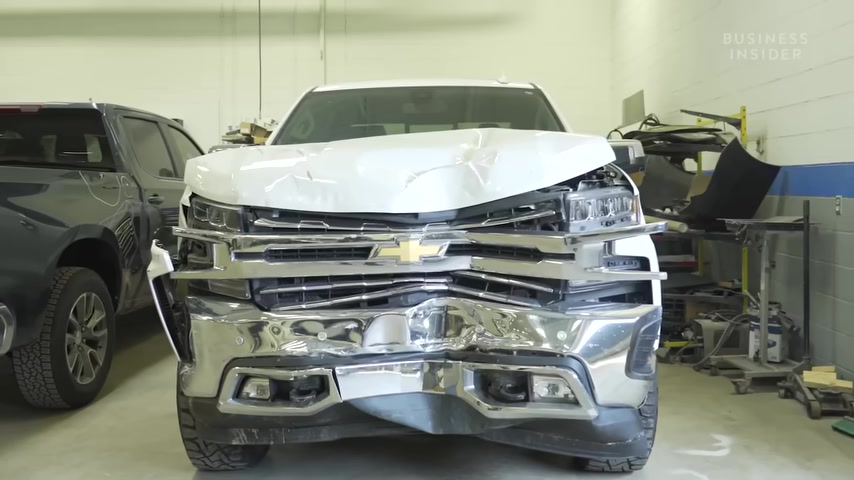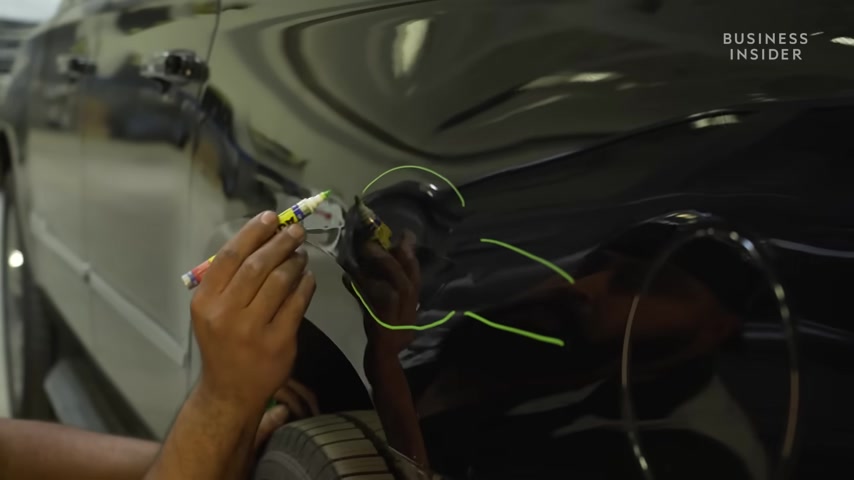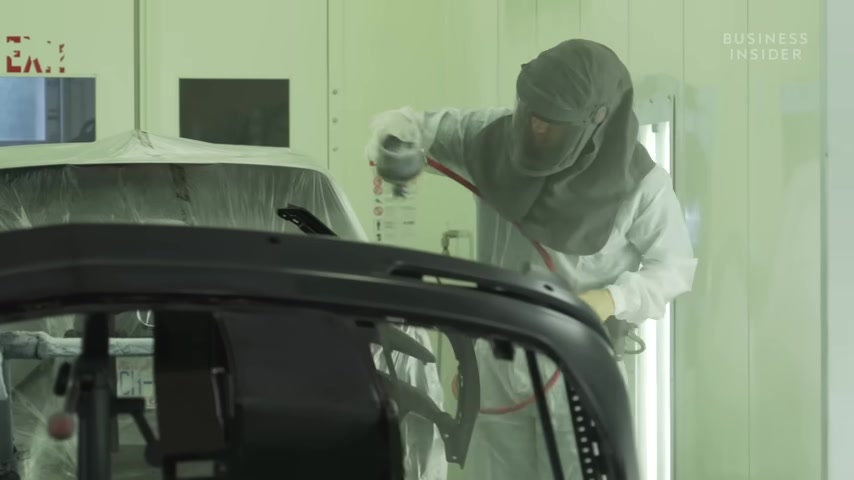https://www.youtube.com/watch?v=mYmNM8-XRP0
How Wrecked Cars Are Repaired _ Cars Insider

Car crashes are incredibly common .
In 2017 , nearly 6.5 million car accidents took place in the US alone .
Collision centers use various techniques to realign a car's frame , restore damaged areas and correct paint .
Here at Hendra Collision Center , we're capable of fixing anything from a small dent to a large repair that requires structural repair .

Some of the typical tools that we use are our flat liner , our frame machine and Bondo if your car is on the frame machine , more than likely , it's got some kind of structural damage when you are getting ready to set up a car on the frame machine is obviously drive it up on the machine , make sure that the vehicle is square .
The second part is you're going to go to the computer to figure out where you're mounting clamps need to go on the vehicle .
We have access to all data which is a computer system that gathers all the information from manufacturers to be able to repair vehicles correctly .

You go ahead and get the car built onto the clamps , then you go to the measuring system and the measuring system will tell you where the damage is we have to digitally measure the structure of the vehicle to ensure that all the components are where they need to be within millimeters .
And then you have to reverse the damage .
When you're operating , you have to be mindful of your surroundings .
Obviously , make sure that you're in a safe spot and make sure that everybody around you is safe .
You have to be very mindful in observing the damage and how it's being pulled out .
The measuring system is connected to the computer and you can see numbers that will move as you are pulling and you want to get those numbers as close as possible to zero .

The frame machine can be very intimidating .
A lot of times the clamps will come off and kind of fly around .
So you have to conquer that fear .
Not all dents requires such a large machine for smaller and more delicate dents .
We use the flat liner .
The first step is to make sure that you've recognized your damage for that .
We have a special light that we set up so that you can actually see all the damage on the panel .
Make sure that you sand the area that's getting ready to be pulled , make sure that you get a good ground , a solid ground before you start to put the pulling keys on the metal .
Not every dent is a straight line , you know , sometimes dents are , they , they have a curve after you've welded your keys onto the spot .
Then you begin your pulling process , you pick the correct bridge that you're going to use .

When operating a bridge , it has a handle that has threads .
And as you turn the thread , the handle gets shorter and that's attached to the bridge and the rod , the rod will pull the dent out .
If you have a dent that's deeper , you're gonna have to pull a little bit more .
If you have a dent , that's not quite as deep , you're gonna have to turn the knob a little bit less .
Then you need to tap the crowns of the dent .
Any time you have a dent , it has , it creates crowns .
The dent doesn't always necessarily pull out .
Sometimes you need to reassess after you pull and you have to maybe pull in a different spot until you've gotten the dent as close as possible to its original position .
After we use the flat liner , we still need to smooth out the dent and that's where the Bondo process begins .
Bondo can be a fast drying filler that is sand that we use to get the car's body as close as we can to its original shape .

Once you've mixed your Bondo on your mixing board , we have plastic spreaders and that is what you use to apply onto the dent .
You have to make sure that you are applying it in the correct spots that you are not applying it too much in spots that is not needed .
You have to make sure that you are very fluid with it and that you are keeping the correct contours of the vehicle .
Once you've applied Bondo and you've sanded it and you're happy with the way that the dent feels and it's visually correct .
At that point , you would take the car over to the paint shop for it to be primed .
One of the first steps of painting is to make sure that you clean off any contaminants that are on the panel .
The full replaced part or repaired part is painted , adjacent panels are also blended in order to ensure a perfect color match .

So the painting process is different for each vehicle because each repair size is different .
But in a perfect world beginning to end , it would be reasonable to say it would take around two hours .
I would say it's very gratifying to fix cars .
If somebody is in your collision center , it's because they had an accident and accidents aren't fun for anybody .
So it is gratifying when the customer picks up their car and they leave and they're happy and you know that you had a part in making this person's problem disappear .
Are you looking for a way to reach a wider audience and get more views on your videos?
Our innovative video to text transcribing service can help you do just that.
We provide accurate transcriptions of your videos along with visual content that will help you attract new viewers and keep them engaged. Plus, our data analytics and ad campaign tools can help you monetize your content and maximize your revenue.
Let's partner up and take your video content to the next level!
Contact us today to learn more.